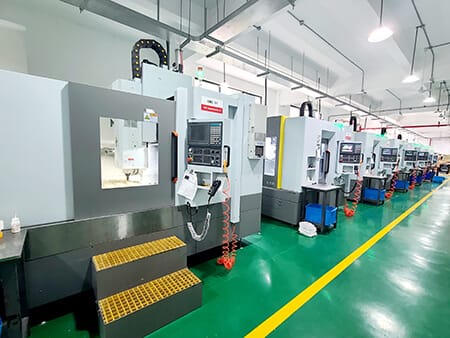Precision machining is a critical process in the manufacturing industry, enabling the production of high-precision parts and components with tight tolerances. This article provides a comprehensive analysis of precision machining techniques, their applications across various industries, the challenges faced, and the future trends shaping the sector.

Overview of Precision Machining: Precision machining involves the removal of material from a workpiece to achieve the desired shape, size, and surface finish with exceptional accuracy.
a. Definition: Precision machining is characterized by tight tolerances, often measured in micrometers or even smaller units.
b. Importance: The precision and quality of machined parts are crucial for the performance and reliability of products in industries such as aerospace, automotive, medical, and electronics.
Precision Machining Techniques: Several machining techniques are used to achieve precision in manufacturing.
a. CNC Machining: Computer Numerical Control (CNC) machining is a widely used technique that employs computerized controls to execute machining operations with high precision.
b. Milling: This process involves the use of rotating cutting tools to remove material from a workpiece, creating complex shapes and features.
c. Turning: Turning is used to rotate a workpiece while a cutting tool removes material to create cylindrical shapes.
d. Grinding: Grinding uses an abrasive wheel to remove small amounts of material, resulting in a high-quality surface finish.
e. Electrochemical Machining (ECM): ECM is a non-traditional method that uses electrical discharges to remove metal without mechanical force.
Applications of Precision Machining: Precision machining finds application in a diverse range of industries.
a. Aerospace: The aerospace industry relies on precision machining for the production of engine components, airframe parts, and landing gear systems.
b. Automotive: High-precision machining is essential for manufacturing engine parts, transmission components, and suspension systems.
c. Medical: The medical sector requires precision machining for surgical instruments, implants, and diagnostic equipment.
d. Electronics: Precision machined parts are used in the production of microchips, connectors, and other electronic components.
Challenges in Precision Machining: The pursuit of precision in machining presents several challenges.
a. Tooling and Equipment: The cost and maintenance of high-precision machining tools and equipment can be significant.
b. Skill and Training: Operators require extensive training and expertise to handle precision machining equipment effectively.
c. Material Selection: Choosing the right material is crucial, as some materials are more challenging to machine with precision than others.
d. Quality Control: Maintaining consistent quality across large production runs is a complex task that requires rigorous inspection and control measures.
Future Trends in Precision Machining: The precision machining industry is evolving, driven by several key trends.
a. Automation and Robotics: The integration of automation and robotics is increasing efficiency and reducing the risk of human error in precision machining.
b. Advanced Materials: The development of new materials, such as titanium alloys and composites, is challenging precision machining techniques and tooling.
c. Additive Manufacturing: The rise of additive manufacturing (3D printing) is complementing precision machining by enabling the production of complex geometries and prototypes.
d. Machine Learning and AI: The application of machine learning and artificial intelligence is enhancing process optimization and predictive maintenance in precision machining.
e. Green Manufacturing: There is a growing emphasis on sustainable practices and the use of eco-friendly materials in precision machining.
Conclusion: Precision machining is a cornerstone of modern manufacturing, enabling the creation of complex and high-precision parts for a multitude of industries. The techniques and technologies used in precision machining continue to advance, driven by the demand for higher quality and tighter tolerances. While challenges such as tooling costs and material limitations persist, the future of precision machining looks promising with the integration of automation, advanced materials, and intelligent systems. Manufacturers must stay abreast of these trends to maintain a competitive edge in the precision machining sector.